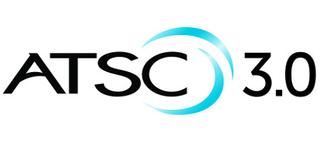BIA/Kelsey: ATSC 3.0 Will Pay for Itself in Three Years

CHANTILLY, VA.—BIA/Kelsey is bullish on ATSC 3.0. The TV business researchers today said that after an “in-depth review of the commercial television broadcasting business,” they concluded that “investment large and medium market stations are considering making in the ATSC 3.0 standard would be recouped within three years. “
“ATSC 3.0 will change the business of broadcasting into a next generation wireless communications business,” said Mark Fratrik, chief economist and SVP, BIA/Kelsey. “This new technology will give Broadcasters the ability to pursue multiple new business models which will significantly diversify their current revenue mix.”
Also see our ATSC 3.0 awareness survey as well as our ATSC 3.0 silo, your one-stop shop for ATSC 3.0 reporting and analysis going back to 2o11, with contributions from ATSC President Mark Richer, TV Technology correspondent Bob Kovacs, TV Technology contributor and pre-eminent RF expert Doug Lung, ATSC 3.0 chairman and Triveni Chief Science Officer Richard Chernock, ATSC Vice President of Standards Jerry Whitaker, Cox Media Vice President of Technical Operations Dave Siegler, TV Technology contributor and Iowa Public TV Director of Engineering Bill Hayes, TV Technology Editor-in-Chief Tom Butts, TV Technology Web and NewsBytes Editor Michael Balderston, Nautel Product Manager and Ennes trustee Fred Baumgartner, Director of Broadcast Engineering and Operations at Walter Cronkite School of Journalism and Mass Communication & KAET-TV in Phoenix Ian McSpadden, TV Technology Oracle of Engineering James E. O’Neal, TV Technology contributor Gary Arlen, and others. At the core of broadcasters’ ATSC 3.0 expectations is the ability to offer a new internet-protocol platform to better satisfy the changing needs of consumers and advertisers. The paper examines the business objectives for the television broadcasting industry and its members around the ATSC 3.0 migration, which include delivery of a higher visual and aural quality, more programming options, and ongoing innovation to accommodate expected and unexpected abrupt and hard-to-predict changing viewing patterns.
BIA/Kelsey also said ATSC 3.0 would help raise advertising revenue through increased viewership, better ad targeting, dramatically expanded and more accurate viewership tracking, and a capability to better integrate multiplatform campaigns, as well as growing non-advertising revenue through the development of new IP-based broadcasting and non-broadcasting business models.
The research, compiled in a new report, also covers concerns related to the ATSC 3.0 conversion, which include overall capital cost, providing uninterrupted service to their existing audience and determining the relevant time frame for transition.
“The biggest opportunities around the implementation of ATSC 3.0 are that it will give broadcasters a new opportunity to grow and address their major concerns like reversing recent local television station viewing trends,” Fratrik said “In our report, we present the business model for implementing ATSC 3.0 based upon our assumptions of the speed of introduction and acceptance by consumers, advertisers and other players in the media ecosystem and overall it’s quite positive for the vast majority of local television stations.”
The report, “The Business Case for ATSC 3.0,” examines ATSC from a business perspective by exploring the advantages this new standard will bring to the industry, in particular as it relates to ad revenue, television viewership and managing digital competition.
Get the TV Tech Newsletter
The professional video industry's #1 source for news, trends and product and tech information. Sign up below.
